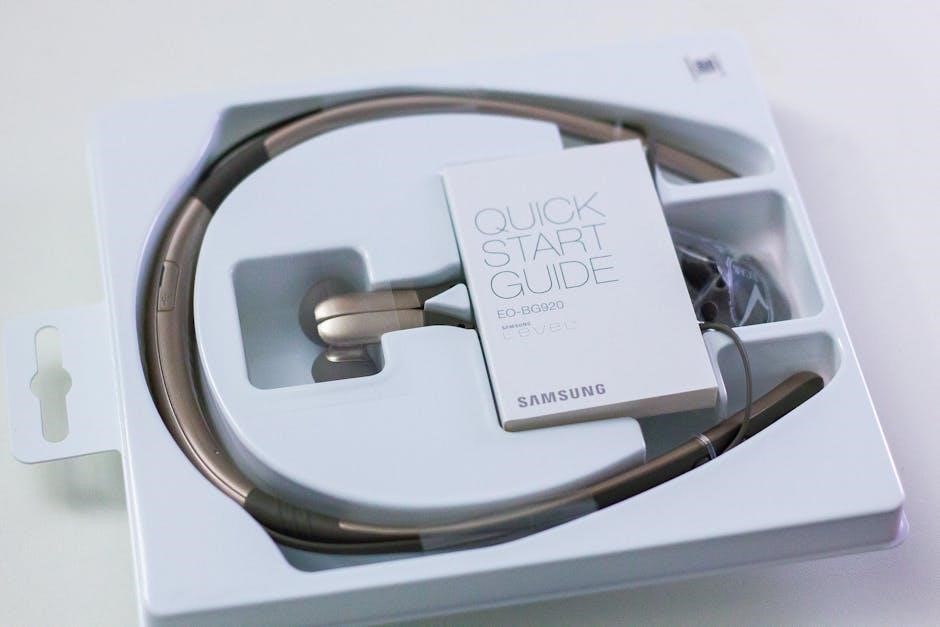product guide
A product guide is a comprehensive resource designed to help users understand and make informed decisions about products. It simplifies complex information, making it accessible to everyone.
Product guides are essential for enhancing user experience and saving time. They provide detailed insights, enabling consumers to navigate options effectively and find the best solutions for their needs.
From core features to customization, product guides have evolved into indispensable tools. They empower users to make smart choices, ensuring satisfaction and maximizing product potential in the digital age.
What is a Product Guide?
A product guide is a detailed resource that helps users understand and make informed decisions about products. It provides insights into features, benefits, and troubleshooting, serving as a bridge between manufacturers and consumers.
- It simplifies complex product information, making it accessible to everyone.
- The guide often includes specifications, customization options, and user tips.
- Whether for tech gadgets or everyday items, it empowers users to maximize product potential.
By offering clear, organized content, a product guide enhances the overall user experience, ensuring satisfaction and informed decision-making.
Why Are Product Guides Important?
Product guides are essential for bridging the gap between products and their users, ensuring clarity and understanding. They enhance user experience by providing detailed insights, helping consumers make informed decisions. Guides save time by consolidating information, reducing confusion and frustration. They also promote cost-effectiveness by minimizing returns and support requests. Additionally, product guides empower users to maximize product potential, fostering satisfaction and loyalty. In competitive markets, a well-crafted guide can be a decisive factor, setting products apart and building trust with customers.
How to Choose the Right Product Guide
Selecting the right product guide involves identifying your specific needs and preferences. Consider the product’s features and complexity to ensure the guide is comprehensive yet easy to understand. Evaluate the guide’s format—digital or physical—and its accessibility. Look for user reviews and recommendations to assess reliability. Ensure the guide is updated with the latest information. Match the guide’s language and detail level to your expertise. Finally, compare multiple options to find the one that best aligns with your goals and provides clear, actionable insights.

Understanding Product Features
Understanding product features is crucial for making informed decisions. Examine functionality, benefits, and technical specifications to align with your needs and preferences effectively.
Core Features of a Product
Core features of a product are its essential elements that define functionality and purpose. These include design, performance, and technical specifications. Understanding core features helps users identify how a product meets their needs and aligns with industry standards. Product guides emphasize these features to ensure buyers grasp the product’s value proposition. Key aspects often highlighted are usability, durability, and compatibility. By focusing on core features, users can make informed decisions without being overwhelmed by secondary details. This clarity is vital for both first-time buyers and experienced users seeking specific capabilities. Always prioritize core features when evaluating a product guide for accuracy and relevance.
- Design and functionality
- Performance metrics
- Technical specifications
- Usability and compatibility
Customizable Options in Products
Customizable options in products allow users to tailor features to their preferences, enhancing functionality and personalization. These options may include color choices, size adjustments, or modular designs. Product guides highlight these features, enabling buyers to explore how customization can meet their specific needs. Customization often improves user satisfaction by making products more adaptable. Guides also explain how to implement these options, ensuring users can maximize their product’s potential. Whether it’s aesthetic or functional, customization empowers users to create a product that aligns with their lifestyle or business requirements, making it a key factor in purchasing decisions.
- Color and design preferences
- Adjustable settings and configurations
- Modular or interchangeable components
Energy Efficiency and Product Features
Energy efficiency is a critical aspect of modern product design, emphasizing reduced resource consumption without compromising performance. Product guides often highlight energy-saving features, such as low-power modes, eco-friendly materials, or smart sensors that optimize usage. These features not only lower operational costs but also align with environmental sustainability goals. By showcasing energy-efficient options, product guides help users make informed decisions that balance functionality and environmental impact. This focus on efficiency can significantly enhance user satisfaction and reduce long-term expenses, making it a vital consideration in product selection and usage.
- Low-power modes and smart sensors
- Eco-friendly materials and sustainable design
- Energy-saving certifications and ratings

Benefits of Using a Product Guide
Using a product guide enhances efficiency, supports informed decision-making, and ensures cost savings by providing clear instructions and insights into product features and optimal functionality.
How Product Guides Save Time
Product guides save time by eliminating guesswork and providing clear, structured information. They offer quick access to product specifications, features, and usage instructions, streamlining decision-making. By presenting details in an organized manner, guides reduce the need for extensive research or trial and error. Users can rapidly identify the best product for their needs, saving hours of comparison and analysis. Additionally, step-by-step instructions ensure efficient setup and operation, minimizing downtime. This time-saving benefit makes product guides indispensable for both novice and experienced users seeking to maximize efficiency and productivity.
Enhanced User Experience with Product Guides
Product guides significantly enhance user experience by providing clear, concise, and visually appealing information. They eliminate confusion by breaking down complex details into digestible sections, making it easier for users to understand and utilize products effectively. High-quality visuals, such as images and videos, further simplify comprehension. Personalized recommendations and interactive elements, like comparison tools, cater to individual preferences, ensuring a tailored experience. Additionally, guides often include troubleshooting tips, reducing frustration and empowering users to resolve issues independently. This seamless integration of functionality and accessibility ensures a more enjoyable and intuitive user journey.
Cost-Effectiveness of Product Guides
Product guides are a cost-effective solution for both businesses and consumers. They reduce the need for extensive research by consolidating information in one place, saving time and resources. By providing clear comparisons and recommendations, guides help users avoid costly mistakes, such as purchasing the wrong product. Additionally, they often highlight budget-friendly options, ensuring shoppers find the best value for their money. For businesses, well-crafted guides can lower customer support costs by addressing common queries upfront. Overall, product guides streamline decision-making, leading to smarter, more economical choices for everyone involved.

How to Use a Product Guide
Identify your needs, review the guide’s features, and follow instructions step-by-step. Use troubleshooting tips to resolve issues and maximize the product’s benefits effectively for optimal results.
- Start by understanding the product’s core functions.
- Refer to the guide for setup and customization.
- Utilize troubleshooting sections for common problems.
- Leverage tips to enhance user experience and performance.
Step-by-Step Guide to Using a Product Guide
Begin by understanding the product’s purpose and your specific needs. Review the guide’s table of contents to locate relevant sections. Start with setup instructions, following each step carefully to ensure proper installation. Once operational, explore customization options to tailor the product to your preferences. Refer to the troubleshooting section for addressing common issues. Regularly update your knowledge by reviewing maintenance tips to extend the product’s lifespan. Always keep the guide handy for quick reference, ensuring you maximize the product’s potential and enjoy a seamless user experience.
- Understand the product’s core functions.
- Follow setup instructions precisely.
- Customize settings as needed.
- Use troubleshooting for resolving issues.
- Apply maintenance tips for longevity.

Advanced Tips for Maximizing Product Guide Potential
To fully utilize a product guide, explore its interactive features, such as search functions or video tutorials, for quicker access to information. Cross-reference sections to gain a holistic understanding of the product. Use annotations or bookmarks to highlight key pages for easy revisits. For complex tasks, break them into smaller, manageable steps, and practice regularly to enhance proficiency. Additionally, integrate the guide with complementary tools, like online forums or apps, to deepen your knowledge and optimize the product’s performance. This approach ensures you unlock the guide’s full potential and achieve your goals efficiently.
- Leverage interactive guide features for better navigation.
- Use annotations to mark important sections.
- Combine with external tools for enhanced learning.
- Break complex tasks into simpler steps.
Common Mistakes to Avoid When Using a Product Guide
When using a product guide, avoid skipping sections or assuming prior knowledge, as this can lead to misunderstandings. Overlooking safety warnings or precautions is another common error, potentially causing damage or harm. Additionally, don’t overcomplicate instructions by adding unnecessary steps. Avoid relying solely on visuals without reading the text, as key details may be missed. Lastly, refrain from ignoring updates or revisions, as they often contain critical information. By avoiding these pitfalls, you can ensure a smoother and more effective experience with the product.
- Skip sections or assume prior knowledge.
- Ignore safety warnings or precautions.
- Add unnecessary steps to instructions.
- Rely solely on visuals without reading text.
- Ignore updates or revisions to the guide.

Product Maintenance and Support
Regular maintenance ensures optimal product performance, while dedicated support provides assistance for troubleshooting and repairs, enhancing overall user satisfaction and product longevity.
Maintenance Tips for Long-Lasting Product Performance
Regular cleaning and inspection are essential to extend a product’s lifespan. Always follow the manufacturer’s maintenance schedule and use recommended tools. Check for wear and tear, and replace parts promptly. Proper storage in a dry, cool place prevents damage. For electronic devices, avoid extreme temperatures and power surges. Update software regularly to ensure compatibility and security. Refer to the product guide for specific care instructions, as improper handling can void warranties. By following these tips, you can maximize performance and prolong product life effectively.
Troubleshooting Common Product Issues
Identify the issue by reviewing error messages or unusual behavior. Restart the product to resolve temporary glitches. Check connections and ensure all components are properly aligned. Refer to the product guide for diagnostic tools or troubleshooting sections. Update software or firmware to the latest version. If issues persist, contact customer support for assistance. Regular maintenance and adherence to guidelines can prevent many problems. By following these steps, you can address common issues effectively and ensure optimal product functionality over time.
Customer Support and Product Guide Integration
Effective integration of customer support within a product guide enhances user experience by providing immediate solutions. Many product guides include dedicated support sections with contact information, FAQs, and troubleshooting tips. Some guides offer direct links to live chat or support portals. This seamless integration ensures users can quickly resolve issues without leaving the guide. Regular updates to the guide reflect customer feedback, improving overall support quality. By combining comprehensive guidance with accessible support, product guides empower users to maximize product potential while minimizing frustration. This integration fosters trust and satisfaction, making it a vital component of modern product design.

Comparing Products and Guides
Comparing products and guides helps identify the best fit for specific needs, ensuring compatibility and optimal performance by evaluating features, benefits, and user requirements effectively.
How to Compare Different Product Guides
To compare product guides effectively, start by defining your needs and priorities. Evaluate the depth of information, clarity, and relevance to your requirements. Compare features, compatibility, and user-friendliness. Check for visual aids like diagrams and charts that enhance understanding. Look for guides that offer troubleshooting tips and maintenance advice. Assess the credibility of the source and user reviews. Consider whether the guide is updated regularly to reflect product changes. Finally, compare the ease of navigation and accessibility across devices. This approach ensures you find the most suitable guide for your product.
Key Differences Between Product Models
When evaluating product models, focus on their unique features, performance capabilities, and design specifics. Compare target audiences, such as whether the product is for professionals or general consumers. Analyze differences in build quality, materials, and durability. Consider variations in pricing and value-for-money propositions. Examine the technology and innovation behind each model, such as advanced features or energy-saving capabilities. Look at brand reputation and customer support offerings. Understanding these distinctions helps identify which model aligns best with your specific needs and preferences, ensuring a more informed purchasing decision.

Product Guide vs. User Manual: What’s the Difference?
A product guide and a user manual serve distinct purposes. A product guide provides an overview of features, benefits, and specifications to help customers make informed decisions. It often includes comparisons and recommendations. In contrast, a user manual offers detailed, step-by-step instructions for operating and maintaining a specific product. While a product guide is broader and more marketing-focused, a user manual is technical and practical, addressing troubleshooting and safety. Understanding the difference helps users access the right resource for their needs, whether they’re choosing a product or learning to use it effectively.

Product Reviews and Feedback
Product reviews and feedback are crucial for enhancing product guides. They provide insights into user experiences, helping improve content and ensure it meets customer needs effectively.
Importance of User Reviews in Product Guides
User reviews play a vital role in product guides by providing real-world insights and experiences. They help creators refine and improve the guide’s content, ensuring it addresses actual user needs and pain points. Reviews also build trust and credibility, as they offer unbiased perspectives from people who have directly interacted with the product. By incorporating feedback, product guides become more accurate and relevant, ultimately enhancing user satisfaction and decision-making processes.
Moreover, reviews highlight common issues or overlooked features, guiding both creators and users toward better outcomes. This collaborative approach fosters a sense of community and shared knowledge, making product guides more dynamic and user-centric over time.
How to Analyze Product Feedback Effectively
Analyzing product feedback effectively involves systematically reviewing user comments to identify patterns and trends. Start by categorizing feedback into themes, such as features, usability, or performance. Prioritize issues based on frequency and impact. Use tools like sentiment analysis to gauge overall user sentiment. Consider the source and context of feedback to ensure diverse perspectives. Document key insights and share them with relevant teams to drive improvements. Regularly revisiting feedback ensures continuous refinement and alignment with user needs, fostering better product development and customer satisfaction.
Using Reviews to Improve Product Guide Content
Leveraging user reviews is crucial for enhancing product guide content. Start by identifying recurring themes in feedback to pinpoint areas needing clarification or expansion. Incorporate common questions and concerns into the guide to address user pain points proactively. Highlight features praised by users and provide detailed explanations for underutilized functions. Use positive reviews to reinforce best practices and include troubleshooting tips for frequent issues. By integrating user insights, the product guide becomes more comprehensive, ensuring it meets the evolving needs of customers and improves overall satisfaction.

Future Trends in Product Guides
Future product guides will embrace AI-driven interactivity, augmented reality, and personalized content. They will prioritize sustainability, offering eco-friendly solutions and real-time updates for enhanced user engagement and convenience.
AI-Driven Product Guides: The Future of Search
AI-driven product guides are revolutionizing how users discover and interact with products. By leveraging machine learning, these guides offer smart search functionalities, personalized recommendations, and predictive analytics. They analyze user behavior and preferences to deliver tailored suggestions, enhancing the shopping experience. AI also enables real-time updates, ensuring information is always current. With voice and natural language processing integration, users can effortlessly navigate complex product catalogs. This technology not only streamlines decision-making but also boosts satisfaction and conversion rates, making AI-driven guides indispensable for modern consumers seeking efficiency and relevance in their purchasing journeys.
Augmented Reality in Product Guide Development
Augmented reality (AR) is transforming product guide development by offering immersive, interactive experiences. AR-enabled guides allow users to visualize products in 3D, explore features, and see how items fit into real-world settings. This technology enhances understanding and decision-making by providing lifelike demonstrations. AR also enables virtual try-ons and simulations, reducing the need for physical samples. By integrating AR, product guides become more engaging and informative, helping users make confident purchases while minimizing returns. This innovative approach bridges the gap between digital and physical, creating a seamless and dynamic user experience tailored to modern consumer needs.
Sustainability and Eco-Friendly Product Guides
Sustainability is increasingly influencing product guide development, with a focus on eco-friendly practices. Digital product guides reduce the need for paper, minimizing environmental impact. Many guides now highlight products made from recycled or sustainable materials, promoting eco-conscious choices. Energy-efficient features and lifecycle perspectives are also emphasized, helping users make greener decisions. Eco-friendly product guides often include tips for responsible usage and disposal, encouraging sustainable habits. By aligning with environmental values, these guides support both businesses and consumers in reducing their ecological footprint while fostering a culture of sustainability.
A well-crafted product guide empowers users to make informed decisions and enhances their overall experience. It serves as a vital resource, ensuring satisfaction and confidence in product selections.
Final Thoughts on Product Guides
Product guides are indispensable tools for consumers and businesses alike, offering clarity and confidence in decision-making. They streamline the selection process, ensuring users find the best fit for their needs. By providing detailed insights, product guides enhance user satisfaction and reduce the likelihood of post-purchase regrets. Their importance lies in their ability to educate and empower, making them a cornerstone of effective product communication. As technology advances, product guides will continue to evolve, incorporating innovative features to deliver even greater value to users worldwide.
Best Practices for Creating a Product Guide
When crafting a product guide, prioritize clarity and conciseness. Use straightforward language and avoid jargon to ensure accessibility. Incorporate high-quality visuals, such as images or diagrams, to enhance understanding. Organize the guide logically, with clear sections and subheadings. Tailor the content to your target audience’s needs, addressing common questions and pain points. Include practical examples or tutorials to demonstrate product usage. Ensure the guide is updated regularly to reflect product updates or new features. Finally, proofread thoroughly to maintain accuracy and professionalism, ensuring the guide serves as a reliable resource for users.
Continuous Improvement in Product Guide Development
Continuous improvement is essential for maintaining a product guide’s relevance and effectiveness. Regularly gather feedback from users to identify areas for enhancement. Analyze usage data to understand which sections are most accessed or confusing. Update content to reflect new features, industry trends, or user preferences. Implement iterative revisions to keep the guide accurate and aligned with customer needs. Additionally, explore new formats or tools to enhance user experience. By prioritizing ongoing refinement, a product guide remains a dynamic, valuable resource that supports both users and the product’s evolution over time.










Leave a Comment